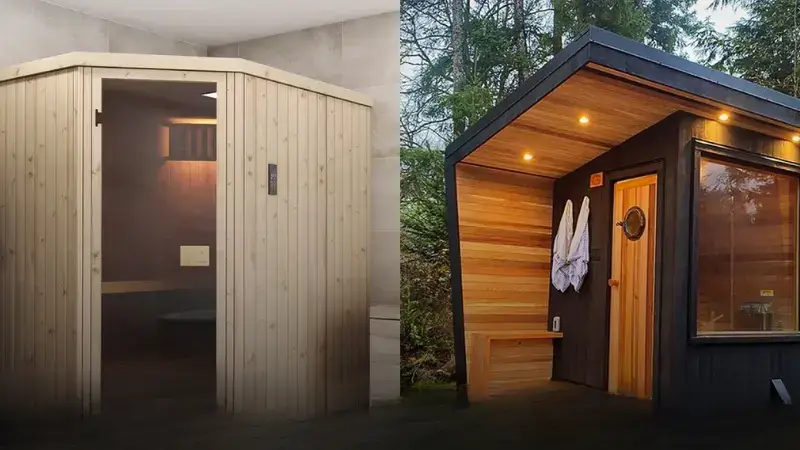
Indoor vs Outdoor Wood: Which Types Last Longer?
The lifespan of wooden furniture is not just about the quality of
craftsmanship, but fundamentally about the type of wood and its suitability for its environment. The
battle between indoor and outdoor wood is a fascinating one, as the two are designed for vastly
different conditions. While any wood will last for a very long time in a controlled indoor
environment, the real test of longevity is how it fares against the relentless forces of nature.
This is a key concern for any custom furniture in Indore.
The Challenges of the Great Outdoors
Outdoor wood has a much tougher job to do. It must withstand a gauntlet
of environmental threats that indoor wood never has to face.
- Moisture and Rot: Rain, humidity, and damp ground are the primary enemies of wood.
They promote the growth of fungi, mildew, and moss, which cause the wood to rot and
decay.
- Sunlight (UV Rays): Direct sunlight can break down the wood's cell structure, causing
it to fade, crack, and become brittle. This process, known as photodegradation, makes the
wood more susceptible to damage.
- Insects and Pests: Termites, carpenter ants, and other wood-boring insects are a
constant threat, capable of hollowing out a piece of furniture from the inside out.
- Temperature Fluctuations: The constant expansion and contraction of wood in response to
temperature changes can lead to warping, splitting, and cracking over time.
Because of these challenges, the types of wood best suited for outdoor
use have specific, inherent properties that make them naturally resilient.
The Champions of Longevity: Outdoor Woods
The most durable outdoor woods are those that possess a combination of
natural oils, dense cellular structures, and pest-resistant compounds. These are often hardwoods,
but some softwoods are also exceptionally durable outdoors due to their unique properties.
- Teak: Considered
the gold standard for outdoor furniture, teak is a tropical hardwood with a high
concentration of natural oils and silica. These oils act as a built-in water repellent and
insect repellent, making it virtually immune to rot, decay, and termites. Teak furniture can
last for 50 years or more with minimal maintenance, naturally weathering to a beautiful
silvery-gray patina.
- Acacia: A very
dense and durable hardwood, acacia contains natural oils and resins that provide resistance
to moisture and insects. It is a cost-effective alternative to teak, and while it may not
last quite as long, it offers a great balance of durability, aesthetics, and affordability
for outdoor applications.
- Cypress: This
softwood is naturally resistant to decay and insects due to a unique preservative oil called
cypressine. It's a great choice for decking and outdoor structures, weathering beautifully
to a light gray color over time.
- Redwood & Western Red Cedar: These softwoods contain tannins and natural oils that make them
highly resistant to moisture, rot, and insects. They are lightweight, dimensionally stable,
and widely used for outdoor furniture, siding, and decks. They typically last for 15-20
years with proper care.
- Ipe: A Brazilian
hardwood, Ipe (pronounced "ee-pay") is incredibly dense and heavy, with a Janka hardness
rating that surpasses many other woods. Its natural oils and a tight grain make it
exceptionally resistant to insects, rot, and decay, often outlasting other woods in outdoor
settings.
The Safe Bet: Indoor Woods
Indoor wood furniture is not subject to the same rigorous environmental
stressors. It is generally protected from the elements, pests, and extreme temperature swings.
Therefore, the choice of wood for indoor use often prioritizes different characteristics.
- Aesthetics:
Indoor woods are chosen for their beautiful grain patterns, colors, and ability to take a
smooth finish. Examples include oak, maple, walnut, and cherry.
- Workability:
Woods that are easier to cut, shape, and join are popular for indoor furniture and
cabinetry. A reliable office furniture supplier Indore will offer both types of woods.
- Sustainability & Cost: Woods like mango and pine are popular for indoor furniture due to
their sustainable sourcing and lower cost, as their lack of extreme weather resistance is
not an issue indoors. If you need office furniture in indore, both options work well.
Final Verdict: Which Lasts Longer?
In a head-to-head comparison, a high-quality outdoor wood like
teak or ipe, properly maintained, will last significantly longer than an indoor wood like oak
or pine. This is not because they are "better" woods in a
general sense, but because they are purpose-built for their environment. The key to longevity,
whether for indoor or outdoor furniture, is to use the right wood for the right job. A beautiful
walnut dining table is an heirloom piece for a climate-controlled room, but a teak garden bench is
an investment that will endure season after season.


